Hydrofoiling: Learn to Surf Foil - Ticket to Glide Ep 01
The printable steps are at the bottom of this blog
So you want to learn to hydrofoil surf? Congratulations! We too have caught the foil bug for all of our board sports. Surf foiling is truly a one of a kind experience that makes even the most marginal days into magical sessions.
Aside from the silent, smooth, and effortless glide, surf hydrofoils tap into the most powerful part of the wave just beneath the surface. This allows you to keep momentum and connect sections on the smallest waves.
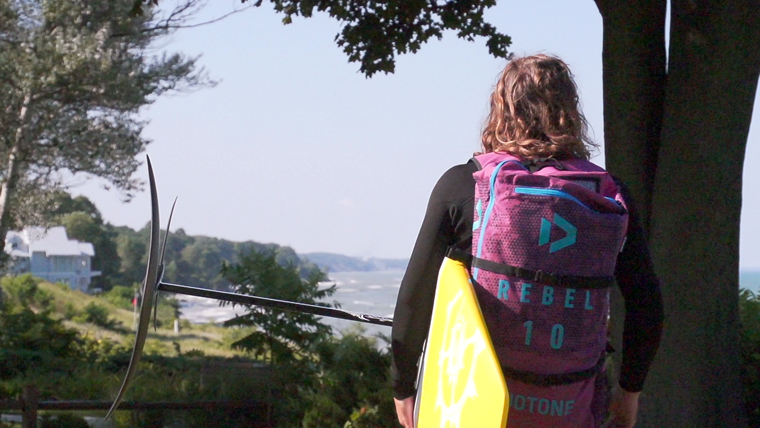
Tucker Checking out the waves in Michigan
Step 1 – Learn to Surf
The first step is learning to hydrofoil surf is learning how to surf [on] a normal surfboard. This may seem like common sense but most surfers can tell you that learning to surf is a process. Adding a hydrofoil to that mix is a recipe for a steep learning curve. If you do not yet consider yourself a confident surfer, grab a board and get out there for some practice. As with most things, using a school or coach will drastically improve your progress. In addition to being a confident surfer, you should understand how to ride a smaller board like a shortboard or fish design. These boards are most similar in shape and use to surf foil boards on the market today and ride differently than longboards. Most notably, they require a steeper wave face and fast pop up due to their smaller size.
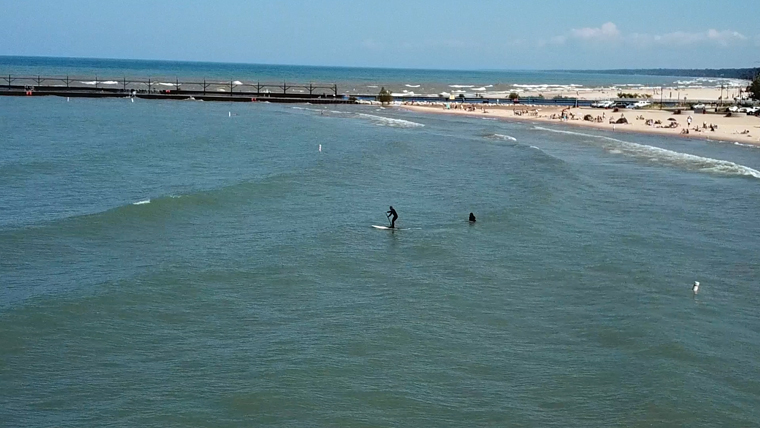
SUPing is a great way to learn
Step 2 - Take A Swim with Your Foil
Taking a swim with your foil may seem silly or unnecessary but it will help you sort out the foil handling stuff that can cause basic mistakes. Take a quick swim with your foil in some calm water. Figure out how you are going to carry your board, get through the shallows, how it handles paddling, and find that sweet spot where you want to sit. Be sure to avoid kicking your wings as that can be painful and session ending.
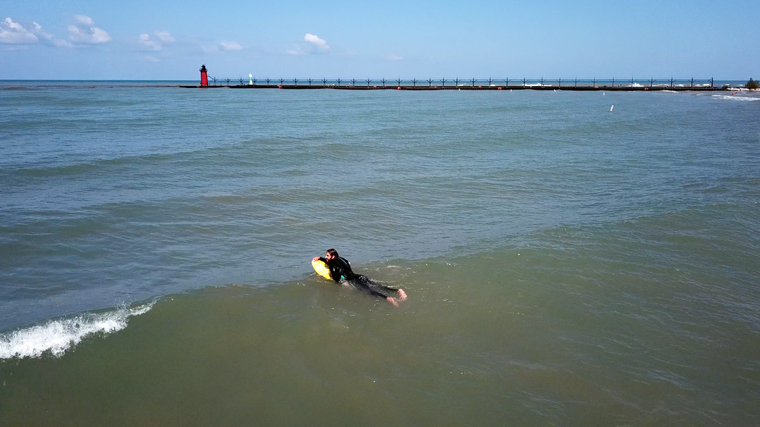
Step 3 – Practicing Behind A Boat - Part I
If you already know how to surf a smaller board and have taken a swim with your foil, then you are ready for the third step of learning foil boarding. This third step is, learning to ride a hydrofoil board behind a boat. Riding a foil behind a boat allows you to focus on how the hydrofoil works and trains your body to react accordingly without the additional variables that waves introduce. Grab a boat, Jet Ski, sailboat...whatever and a couple like-minded friends for some practice. Longer tow lines allow you to get away from the boat's cavitation (aerated water) and prop wash for the smoothest ride. Cutting outside the wake will also help. Here is a list of recommended boat speeds for the easiest learning. The proper speed gives stability and adequate lift to the foil.
- 8-12 mph -Low aspect/ high volume wings (Slingshot H2 & Infinity 76, Naish Thrust L, XL surf & WS, Lift 170, Lift 200, Gofoil Iwa, Gofoil Maliko, Cloud 9 P27, Delta Surf, Delta Mega surf)
- 10-14 mph Low aspect/ Medium volume wings (Slingshot H1 and H4, Naish Thrust M, Liquid Force Impulse, Lift 150, Gofoil Kai, Cloud 9 S24)
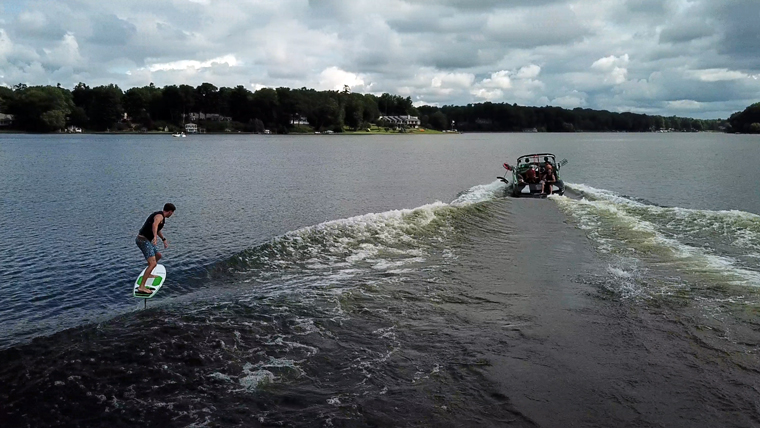
The boat is the easiest way to practice your skills
After board starting behind the boat, the first thing you want to do is learn how to ride with the board on the water. This will require a fair amount of front foot pressure to keep the board from coming up on foil. If you find that you are putting more than 70-percent of your body weight on the front foot, change your foot stance further forward on the board. For most foils, the ideal back foot position is directly above the front mast edge with your feet roughly shoulder width apart. When you have mastered keeping the board on the water it is time for controlled take offs.
Ready to ride?
Step 4 – Boat part II - Controlled Take Offs
Controlled takeoffs are required for successful hydrofoiling in any discipline. Taking off intentionally allows you to keep your momentum and start from a stable platform. The key to this is shifting your weight slowly and smoothly without upper body movement. Do not think of your hydrofoil like a skateboard or a normal surfboard that requires drastic leg pressure and exaggerated body movements. If you can learn to keep your body quiet and slowly shift weight from one foot to the other, your learning curve will accelerate in a more safe way without building bad habits.
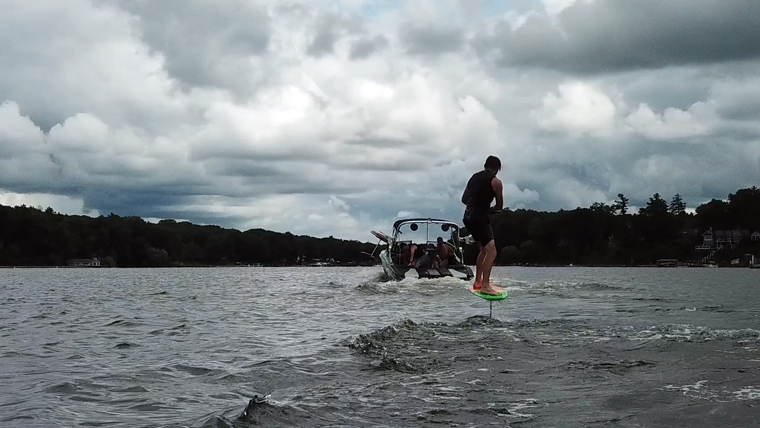
It's best to learn this in a controlled environment
To practice this, bend your knees and shift weight from one foot to the other while keeping your upper body in the same position. When you are under control and would like to lift off, shift your weight slowly to your back foot until the foil starts to rise. When you are just a few inches off the water begin to shift your weight forward until the board stops rising. If you can hold that position stable, then you will get some long rides on foil. When you have this mastered, the next step is to practice pumping up and down as well as turning back and forth. This will take some practice and lots of falls to get right but when you do you will be ready to hit the waves.
Step 5 - Boat Part III - Riding Wake and Pumping
Ok, so you can foil behind the boat for a good distance and feel under control, now is the time to take the next step and learn to ride the wake as well as pump your foil. If you have a decent sized boat, lets say over 20’, you can probably wakefoil without the rope. Larger boats may be easier to do this on the second wake where there is a little less power and speed. Smaller boats To do this, you simply pull yourself up the rope to the wake you wish to ride, get comfortable, and then drop the rope. We'll do a full tutorial on pumping very soon so stay tuned.
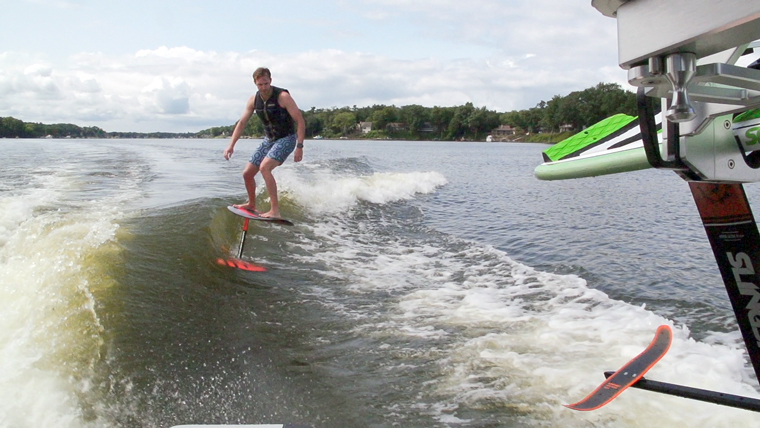
Step 6 – Your First Session
The first time you paddle out be sure to do two things to prepare. First, attach a surf leash of appropriate size. Foiling with a leash not only protects other people in the lineup but also aids in visibility if an accident should occur. If your leash is attached your board will "tombstone" and indicate to other waterman or lifeguards that you are in trouble and mark the spot for your rescue. Without a leash, your board will simply wash in without any indication that you are in trouble. While we are on the subject of safety, we always recommend using a helmet and impact vest when foiling in any sport to protect yourself.
The second thing to do before hitting the water is to move your foil closer to the tail of your board. This will aid in keeping your board on the water when catching the wave. The last thing you want when you are paddling in is to lift off on foil.
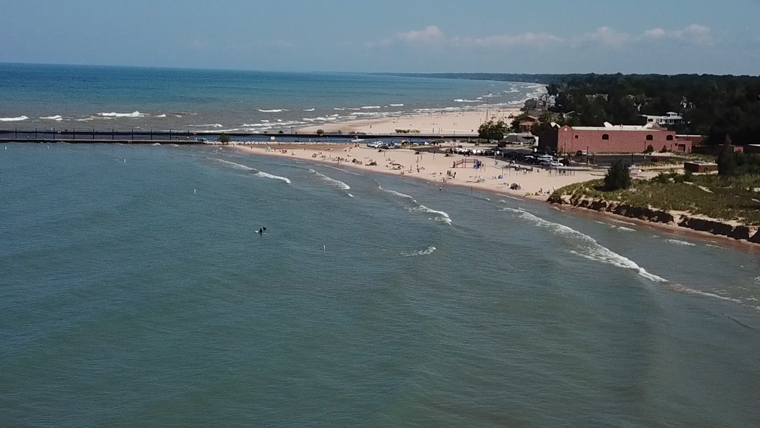
Smaller mushy waves are the easiest to learn on
When paddling out for your first session, find a spot without obstacles: surfers, swimmers, piers, reefs etc. These just complicate and make your first attempts more difficult and dangerous. When you find your spot, paddle out just as you would with your normal board.
Catching your first wave will go just like a normal surf session. Find a wave, paddle with it, and get to your feet. When you get this far, shift gears to your boat training and slowly shift your weight backward, get on foil, and level it off. When you do this, you will accelerate down the line and likely outrun the wave, so get ready for a cutback to bring yourself back to the wave or find another bump to carry you along. If you have prepared properly, this with come naturally and without trouble.
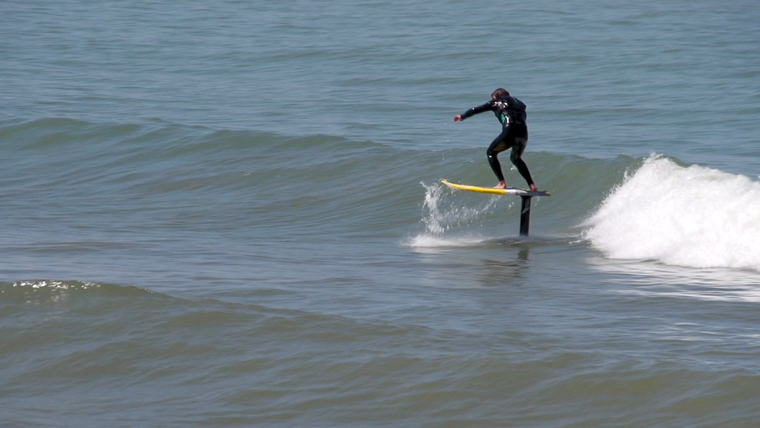
Paddle back out with your huge frothing smile and do it again! If you are still a bit shaky or find some difficult waves, just remember to commit to your falls. If you start to fall, do NOT try to save it and over correct, this is where most people take hard falls. If you can see the fall and just commit to it, you will likely tip over gracefully rather than falling back on your board.
Useful Surf Foiling Tips & Tricks
Mastering the art of foil surfing will take some time and no one can tell where this new form of wave riding will lead or how the technology will evolve. Currently, the trend is long rides on small waves that would normally leave you on the beach. If you find yourself riding in small waves, perfecting the hop/glide and cut back are key to long rides. The hop and glide allows you to bring your wings higher than ride the momentum down and continue your ride even without a wave present. The trick here is to suck your knees up high then glide for a short period. If you can do this a couple times in succession you can start your momentum then glide for a longer period. Do not hop on the board but rather suck your knees up then ride it out to keep maximum momentum without interruption. Cutbacks are another great way to stay on foil without a powerful wave. By cutting back and forth across the more powerful part of the wave you can retain your momentum without outrunning the wave. By using these techniques and having a keen eye to find the next small bump you will find yourself riding until your legs give out.
We have been riding and invested in foil boarding for nearly six years now. The sport is ever evolving. If you have any questions feel free to contact one of our experts at 800-622-4655 or jump on our secure online chat. We would be happy to help.
Printable steps
Step 1 - Learn to surf
- If you can already ride a smaller board like a fish or a shortboard, skip this step
- Start with a large board in mellow conditions
- Progress to smaller boards and larger conditions
- Don’t need to be a pro, just comfortable riding in normal conditions on a smaller board.
Step 2 - Take a swim with your board
- Learn to handle the board in the water
- Paddle around a bit
- Be careful to not kick your wings
Step 3 - Get behind a boat
- Any boat capable of pulling up a wakeboarder/water skier. Wake, ski, jetski, pontoon, center console
- Start with a long rope
Boat speeds
- 8-14 mph -Large wings
- 10-16 mph Medium wings
Drills
- Controlled takeoffs
- Front foot pressure
- Shift your hips
- Keep a quiet body
- Lift then level
- Get comfortable riding
Step 4 - Learn to pump
- Drop the rope and pump
- Suck up your legs then glide at higher speeds. Stay fluid and keep momentum.
- Short, quick pumps at higher pumps
- Get to the second wake if available and ride it
- Kiteboarding is another great way to build skills quickly
Step 5 - Location and equipment
- Go out in small, weak, uncrowded waves
- Learn safely
- Experience how fun small waves can be
- Avoid shallow sandbars and reefs
- Always wear a leash. We recommend something a few inches longer than your board
- A helmet is a good idea
- Start with your foil further back and move it forward slowly
Step 6 - First wave
- Paddle in as if you would any normal surfboard
- Get up, gain control, then lift off
- Roughly 60% of weight on the front foot
- Foot positioning is important and dependent on your wing
Written and produced by: Tucker Vantol, Ryan "Rygo" Goloversic and Blake Olsen
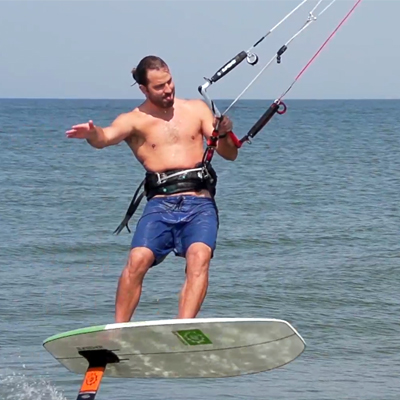
Tucker Vantol
Mackite's resident surf and "Hydrofoil junkie." You can either catch him on the phones or on the water at dawn testing new gear. He is proficient at a myriad of sports, a shaper and passionate about getting his water time. When he discovered kiteboarding it took over as his predominate sport. The same could be said about hydrofoiling.
Written and produced by Ryan (Rygo) Goloversic Blake Olsen and Tucker Vantol
Recent Posts
-
Duotone Ventis 2025 | What's New?
If you're familiar with Duotone's Ventis, you know its specialty is freeriding in light wind …23rd Apr 2024 -
Duotone Ventis D/LAB 2025 Overview
If you ride in an area with multiple light wind days and need a wing that'll let you get o …23rd Apr 2024 -
Foil Drive | Essential Maintenance Tips to Help Enjoy Your Ride
Ryan from MACkite takes a few minutes to chat with Ben from Foil Drive and pick up some ti …22nd Apr 2024




